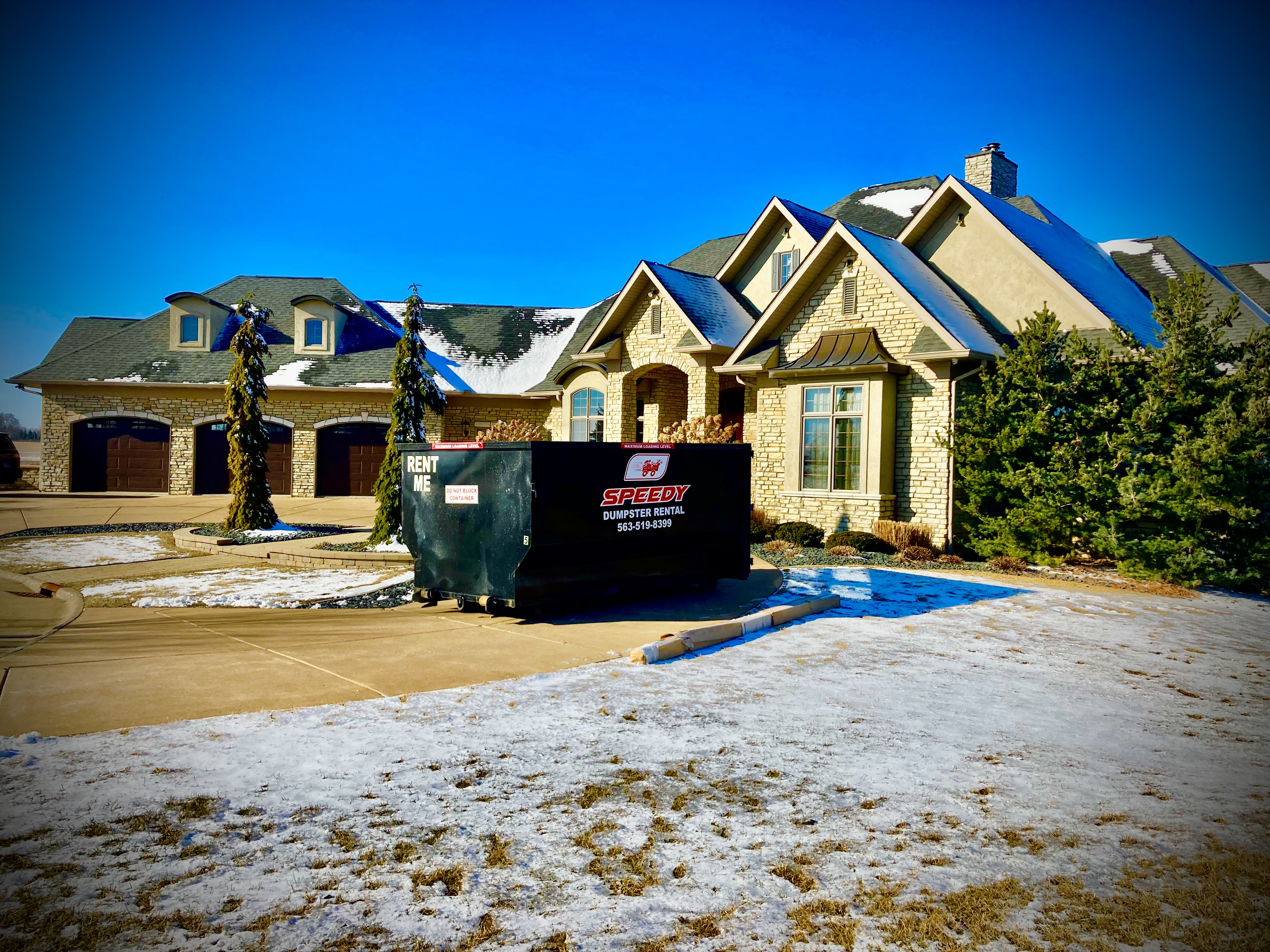OFFICE HOURS
Monday - Sunday: 7:00 AM - 7:30 PM

Construction Dumpster in Silvis, IL
Construction dumpster rental in Silvis, IL helps contractors manage waste efficiently. Learn more about sizes, streams, safety, & permitting get started today.
Construction Dumpster in Silvis, IL
Construction dumpsters are a core part of keeping Silvis job sites safe, efficient, and compliant. Whether you are managing a residential remodel, a commercial build in an industrial park, or a public works project near the Quad Cities, choosing the right roll-off container, understanding local placement rules, and planning debris streams will reduce downtime, control costs, and minimize environmental impact. This page explains the practical options, common challenges in Silvis, IL, and the operational details contractors and project managers need to finalize dumpster plans.
Common construction dumpster types and recommended sizes
Construction projects create very different waste profiles. Choose a container that fits the work and site access.
- 10-yard roll-off: Best for small remodels, single-trade jobs (drywall, small roofing tear-off), and tight residential lots. Easier placement on driveways.
- 20-yard roll-off: Versatile for moderate remodels, garage or deck replacements, and light framing waste.
- 30-yard roll-off: Ideal for full house gutters, medium commercial projects, and jobs generating large volumes of mixed debris.
- 40-yard roll-off: Suited to major demolitions, heavy concrete or roofing projects, and long-term site needs.
For heavy materials like concrete, brick, dirt, or tile, lean toward larger, heavy-duty containers rated for high-density loads. In Silvis, where many projects use masonry and concrete, selecting a container with appropriate floor strength and weight allowance is essential.
Mixed vs separated streams: what's best for Silvis projects
Deciding between mixed construction debris and separated streams affects disposal cost and diversion rates.
- Mixed-stream (single container): Simpler for fast-paced jobs and small crews. Ideal where labor to sort is limited, or turnaround speed matters. Expect some items to be rejected by facilities that require separation.
- Separated streams: Separate containers for wood, metal, concrete/asphalt, and general construction waste. Yields lower disposal costs for recyclable materials and improves landfill diversion. Recommended for municipal jobs, projects near recycling facilities in the Quad Cities area, or when aggregates and metals are major components.
Practical guidance: separate heavy inert materials (concrete, brick, asphalt) into their own container when possible to avoid early weight limits and to access local crushing or recycling outlets.
Delivery coordination and site placement guidance
Effective delivery planning prevents blocked access, safety hazards, and permit issues.
- Site access and approach: Verify overhead clearances, drive width, and turning radius for roll-off trucks. Protect finished surfaces: use plywood or cribbing under the container to prevent driveway damage.
- Placement: Place dumpsters on level ground away from drainage paths and public sidewalks when possible. For curbside placement or use of public right-of-way, city or county permit may be required.
- Timing: Coordinate drop-offs and pickups to match trade schedules and material removals, avoiding weekends or high-traffic periods. For long-term projects, scheduled swaps (empty-for-full exchanges) keep the site moving without full downtime.
- Long-term rental options: For multi-month jobs, arrange fixed schedules or front-load credits for swaps to accommodate varying haul frequencies during different phases.
Weight, material restrictions, and hazardous items
Understanding prohibited items and weight limits keeps projects compliant.
- Typical restrictions: hazardous wastes (paints, solvents, asbestos-containing materials, oil, batteries, pesticides), pressurized containers, compressed gas tanks, and biohazardous wastes are banned from standard construction dumpsters.
- Asbestos and lead-based paint: These require specialized containment, testing, and certified disposal. Do not place in standard roll-offs.
- Weight limits: Containers are subject to tonnage limits and overage fees. Heavy debris like concrete or brick can hit limits quickly even if volume remains. Plan separate loads or use binders to reduce material bulk where feasible.
- Local considerations: Confirm municipality or county policies for prohibited materials within Rock Island County or Silvis city limits to avoid fines or rejection at disposal.
Site safety, signage, and best practices
A safe, organized site reduces liability and improves project flow.
- Signage: Post clear, weather-resistant signs on or near containers indicating allowed materials and prohibited items. Include reflective markers for low-light conditions.
- Perimeter controls: Use cones or temporary fencing for high-traffic staging areas. Keep a 10- to 15-foot clearance for truck maneuvering.
- Weather prep: In Silvis winters, lids and covers prevent snow and ice accumulation; during spring thaw, use mats or gravel to prevent trucks from getting bogged down in mud.
- Load practices: Do not overfill past the top rail; condensed or protruding loads may be rejected for transport. Evenly distribute heavy materials to avoid tipping.
Recycling, landfill diversion, and local disposal options
Silvis projects benefit from nearby regional facilities that accept recyclable construction streams.
- Recyclable streams: Metals, concrete/asphalt, clean wood, and certain plastics are commonly accepted at local recycling and processing yards in the Quad Cities region. Separating these materials reduces disposal costs and supports sustainability goals.
- Material processing: Concrete and asphalt can often be crushed and reused as base material. Metals are typically recycled with near-complete diversion.
- Documentation: For public projects requiring diversion reporting, keep weight tickets and manifests from recycling facilities to demonstrate compliance.
Permitting and regulatory considerations in Silvis, IL
Permits may be required for placement on public streets, for large or long-term containers, or for projects near municipal drainage or flood-prone areas.
- Check local requirements: Placement on curb or city right-of-way generally calls for a permit from the City of Silvis or Rock Island County. Restrictions may apply for containers near floodplains or in protected zones.
- Environmental compliance: For disposal of regulated wastes or suspected asbestos-containing materials, follow Illinois EPA and local regulations for handling and manifesting.
Final planning tips for contractors and site managers
- Plan container sizes by phase: demolition, rough structural work, and finish phases each have different waste profiles.
- Schedule swaps for heavy phases: For concrete pours and large demolitions, arrange for immediate swaps or additional containers to avoid weight overage and site slowdown.
- Factor seasonality: Winter and spring conditions in Silvis affect site access and container placement. Protect paved surfaces and allow time for thaw-related delays.
- Track diversion: Maintain records of separations and recycling to quantify landfill diversion and support green project goals.
Well-planned construction dumpster service reduces project friction, controls disposal costs, and increases site safety for Silvis jobs of every scale. Proper sizing, clear separation strategies, permit awareness, and weather-aware logistics make the difference between a smoothly run site and repeated stoppages for rejected loads or site access issues.

Customer
Testimonials
See what our satisfied customers are saying about their experience with us.
